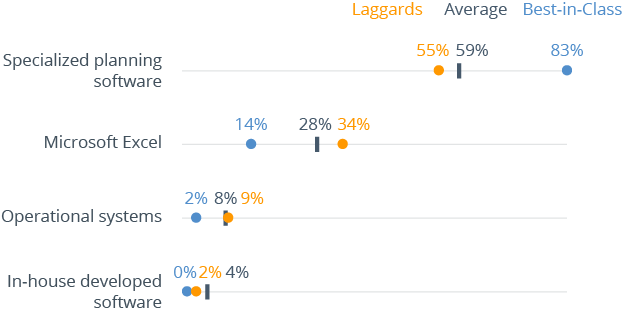Refining the answers to show the main software tool used for planning reveals that 59 percent use specialized planning software to support their planning processes. These companies have recognized the added value specialized planning software can provide with functionality to efficiently support and improve planning processes.
However, 28 percent still use Excel spreadsheets with no underlying database or specific planning functionality as their principal planning product. As we will see in the following chapters, problems, dissatisfaction and a low level of achievement of business benefits are among the inevitable consequences of using Excel as a planning product.
A comparison between best-in-class companies and laggards reveals that 83 percent of best-in-class companies use specialized planning software for planning and budgeting, whereas 34 percent of laggards standardize on Excel. Just 55 percent of laggards use specialized planning software as their main planning product.
Something we often discover in BARC’s consulting projects is that a company’s choice of software product for planning often reflects its level of appreciation of the value of planning. While planning is an essential element of management control to align operational business with strategic corporate objectives for many best-in-class companies, it is often regarded as a chore that has to be done at least once a year in laggard companies.
For further insights see The Planning Survey 17.







